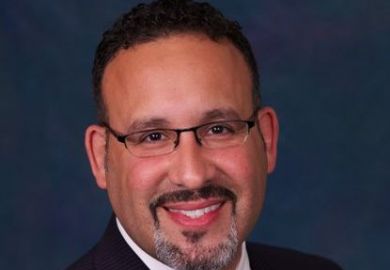The expanded tuition subsidy given to US military veterans after the 9/11 attacks drove down their net earnings by enticing them to spend more time in college, an analysis led by Dartmouth College-based researchers has found.
The average earnings loss − about 4 per cent nearly a decade after leaving the military – appears to be largely due to the generosity of the subsidy and the relatively low quality of the colleges that many veterans choose, the analysis concluded.
“Under a variety of conservative assumptions,” the authors said in a preprint version of their findings posted by the National Bureau of Economic Research, “veterans are unlikely to recoup these reduced earnings during their working careers.”
That outcome differs from earlier versions of the GI Bill, an iconic benefit that dates back to World War II and typically produced a net salary advantage for former soldiers within two or three years, the authors said.
The new study centred on army veterans, looking at 1.2 million former soldiers who left that branch of the military between 1994 and 2017. Along with Dartmouth, the author affiliations included Texas A&M University, the University of Michigan, the College of William & Mary and the US Department of Treasury.
A leading group that advocates for veterans in higher education said that the results were not surprising and chided the authors for failing to place the blame more squarely on for-profit colleges.
The analysis “buries its key finding: predatory for-profit colleges are driving down earnings”, said Carrie Wofford, the president of Veterans Education Success, a coalition that includes policy experts and academic scientists.
The expansive benefits “would certainly be expected to pull more underprepared individuals into higher ed”, added Barmak Nassirian, the group’s vice-president for higher education policy. “But even there,” he said, “the first reaction should not be to simply conclude that more generous subsidies are irredeemably ineffective but [instead] focus on better counselling to guide vets into quality programmes that are right for them.”
The Dartmouth-led study did note the aggressive efforts to recruit veterans made by for-profit colleges, which are widely known to be associated with far greater rates of student loan defaults.
But the huge expansion of GI benefits after 9/11 created an especially big lure and target, roughly doubling the average maximum federal subsidy that had been available to veterans, the authors said.
The value of the benefit for each student varies across the country, tied to the highest public university tuition for their state, and includes a substantial monthly housing allowance for those enrolled for at least half-time studies.
The result is that 55 per cent of army veterans enrol within two years of leaving the service, and the programme pays out $13 billion (£9 billion) a year. That’s half of what the federal government spends on the entire Pell grant programme for low-income students and more than all the grants and scholarships provided by all 50 states, the analysis said.
One of the paper’s authors, Bruce Sacerdote, a professor of economics at Dartmouth College, acknowledged the problem with for-profit colleges, but said that the low or negative paybacks for veterans extend well beyond them “and encompass many institutions and degree programmes”.
The paper noted that two-year public institutions are the most common type of college chosen by veterans using the federal benefit. About 9 per cent of veterans completed a bachelor’s degree within six years of leaving the army, and their average earnings nine years after separation were $32,000 in 2016, according to the analysis.
Register to continue
Why register?
- Registration is free and only takes a moment
- Once registered, you can read 3 articles a month
- Sign up for our newsletter
Subscribe
Or subscribe for unlimited access to:
- Unlimited access to news, views, insights & reviews
- Digital editions
- Digital access to THE’s university and college rankings analysis
Already registered or a current subscriber? Login







